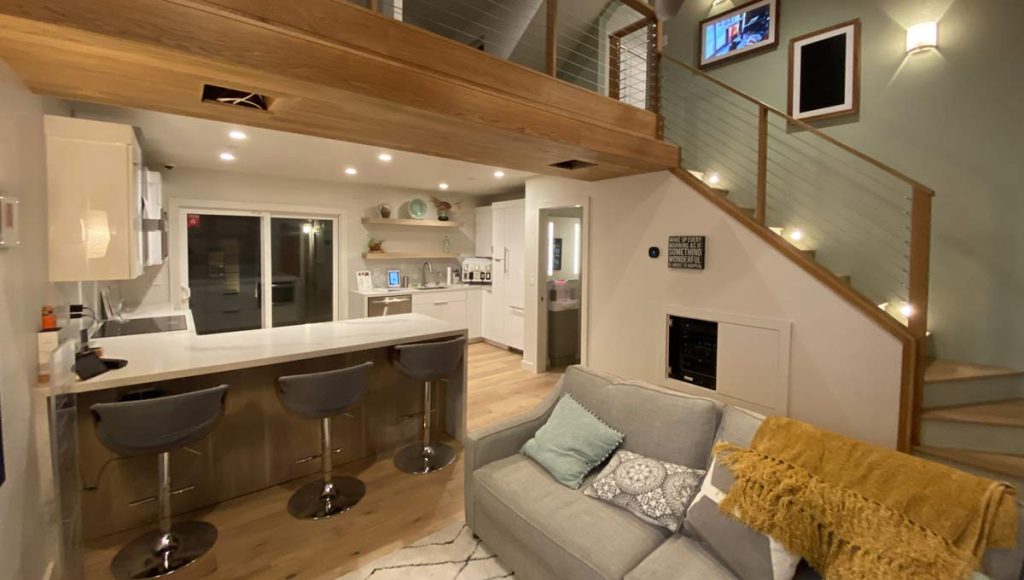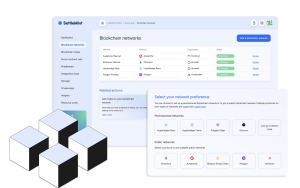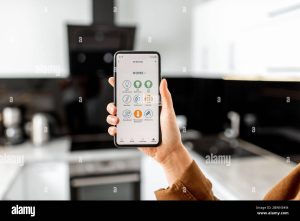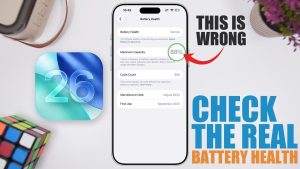Let’s be honest. The dream of a fully automated smart home often feels like it belongs to homeowners. You know, the ones who can rip out walls, rewire entire circuits, and install permanent gadgets without a second thought. For renters? Well, it can seem like a distant fantasy, locked away behind a lease agreement and the fear of losing a security deposit.
But here’s the deal: that’s an outdated way of thinking. The smart home revolution has quietly expanded, and it’s now firmly on the side of the tenant. We’re talking about a world of powerful, plug-and-play, and—most importantly—rental-friendly smart home devices that require zero permanent modification.
Why Bother? The Renter’s Smart Home Advantage
You might wonder if it’s even worth the effort. Absolutely. Think of it less about grand, architectural control and more about injecting daily convenience, security, and efficiency into your living space. It’s about making a temporary space feel truly, uniquely yours.
Honestly, the benefits are immediate:
- Enhanced Security Without the Hassle: Get peace of mind with smart plugs, sensors, and cameras you can take with you.
- Serious Savings on Utilities: Smart thermostats and plugs can cut down on your energy bill, paying for themselves over time.
- Next-Level Convenience: Dim the lights, play music, or turn on the coffee maker without leaving your couch. It’s the little things.
- Accessibility on Your Terms: Voice control and automation can be a game-changer for anyone with mobility challenges.
The Golden Rule: No Wires, No Worries
The cardinal rule for any renter looking at smart home automation is simple: no permanent changes. Your mission is to find devices that are wireless, battery-powered, and use adhesive or simple plug-in mechanisms. The goal is to restore your apartment to its original state when you leave, with no trace of your smart upgrades behind.
That said, always, always double-check your lease and have a quick chat with your landlord if you’re unsure. A little communication goes a long way.
Your Rent-Friendly Smart Home Starter Kit
Alright, let’s dive into the good stuff. Where do you even begin? You start with the basics—the devices that deliver the biggest impact with the least amount of fuss.
1. Smart Plugs: The Gateway Drug
If you do one thing, start here. A smart plug is the most versatile tool in your arsenal. It’s a simple adapter that turns any “dumb” appliance into a smart one. Plug your lamp into it, and suddenly you can control that lamp with your phone or your voice.
You can set schedules—like having a light turn on at sunset to deter burglars or your coffee maker kick on at 7 AM. It’s instant automation, and when you move, you just… unplug it. Magic.
2. Smart Lighting (That Isn’t Permanent)
You don’t need to replace light fixtures to get smart lighting. Smart bulbs are the perfect solution. Screw them into your existing lamps or overhead fixtures just like a regular bulb. Then, control them via an app. Change color temperatures, set dimming schedules, the works.
And for rooms without overhead lights? Smart LED light strips with adhesive backing are a renter’s best friend. Line them under cabinets, behind your TV, along baseboards. They peel off cleanly when it’s time to go.
3. Smart Speakers & Hubs: The Brain of the Operation
This is your command center. A device like an Amazon Echo (Alexa) or Google Nest Hub sits on a countertop or shelf. It connects all your other devices and lets you control them with simple voice commands. “Alexa, turn off the bedroom light.” It’s the glue that holds your makeshift smart home together.
4. Smart Sensors & Security
Security is a huge concern, especially in a transient living situation. Battery-powered, adhesive-mounted sensors are your ally.
- Contact Sensors: Stick them on doors and windows to get alerts if they’re opened.
- Motion Sensors: Use them to automatically turn on lights when you walk into a room.
- Indoor Cameras: Plenty of models just need a power outlet. Use them to check on pets or keep an eye on things while you’re away.
Navigating the Tricky Stuff: Thermostats and Locks
These two categories require a bit more finesse, but they’re not impossible.
For smart thermostats like a Nest or Ecobee, you’ll likely need to replace the existing unit. This is a gray area. Some landlords are fine with it, especially if you offer to swap the old one back when you move out (and you get the benefit of lower energy bills in the meantime). Always, and I mean always, get explicit permission first.
Smart locks are even trickier. A full lock replacement is a major no-no without landlord approval. However, there are now smart lock add-ons that fit over your existing deadbolt. They’re battery-powered and install with just a screwdriver, leaving the original hardware completely intact. This is a fantastic compromise for renters seeking keyless entry.
Choosing Your Ecosystem: A Quick, Painless Guide
You’ll hear about “ecosystems”—basically, which company’s technology your devices run on. The big two are Amazon Alexa and Google Assistant. Apple HomeKit is a third, more premium option.
My advice? Don’t overthink it at the start. If you already use an Android phone, you might lean toward Google. If you’re an Amazon Prime member, Alexa might feel more natural. Most devices work with both, but it’s good to pick a lane so all your gadgets can talk to each other seamlessly.
| Device Type | Renter-Friendly Focus | Key Consideration |
| Smart Plug | Plug-in, no install | Ensure it fits your outlet spacing |
| Smart Bulb | Screw-in, no install | Check bulb base size (e.g., E26) |
| Smart Speaker | Plugs in, sits on furniture | Choose your preferred voice assistant |
| Contact Sensor | Adhesive strips, battery-powered | Test adhesion on your wall surface |
Setting It All Up: A Tenant’s Workflow
So you’ve got your box of gadgets. Now what? Start small. Honestly. Don’t try to automate your entire apartment in one weekend.
Unbox your smart speaker first. Get it connected to your Wi-Fi. Then, add one smart plug. Create a simple routine, like “Good Morning,” that turns on that plug (which is connected to your lamp). Get a feel for it. Once you’re comfortable, add another device. Build your smart home slowly, like you’re layering flavors in a good stew.
And when it’s time to move? Keep all the original boxes. Have a dedicated “tech bag” for all your smart home gear. Document how you had things set up—take a photo of your app’s routine page. It’ll make reassembly in your new place a breeze.
The Final Word: Your Space, Your Rules (Even Temporarily)
Renting doesn’t mean you have to live with a lack of control or modern convenience. The technology has evolved to meet you where you are. It’s about working within constraints to create a home that responds to you, that saves you money, and that keeps you safe.
Your apartment might be a temporary stop on a longer journey, but your comfort, your security, and your daily routine don’t have to feel that way. With a few clever, non-permanent gadgets, you can carry that sense of a smart, personalized home with you, wherever you end up next.






More Stories
Digital Minimalism Tools and Practices: Reclaim Your Focus in a Noisy World
Sustainable Tech Innovations for Reducing Digital Carbon Footprints
What is Best Available Technology?